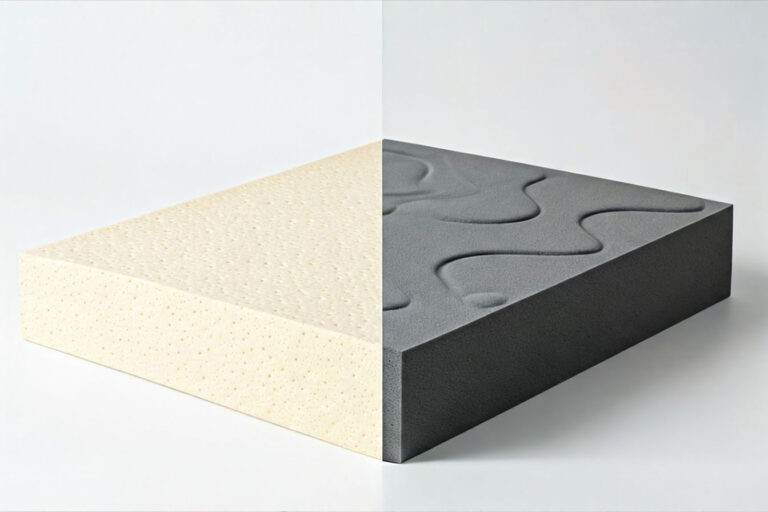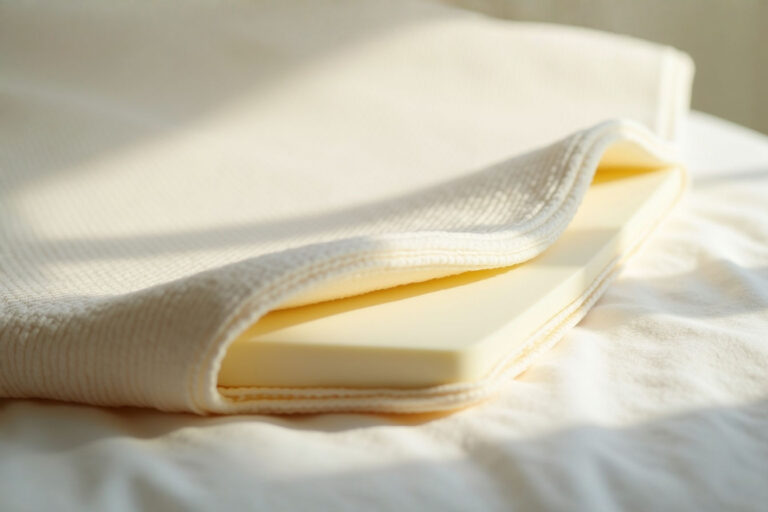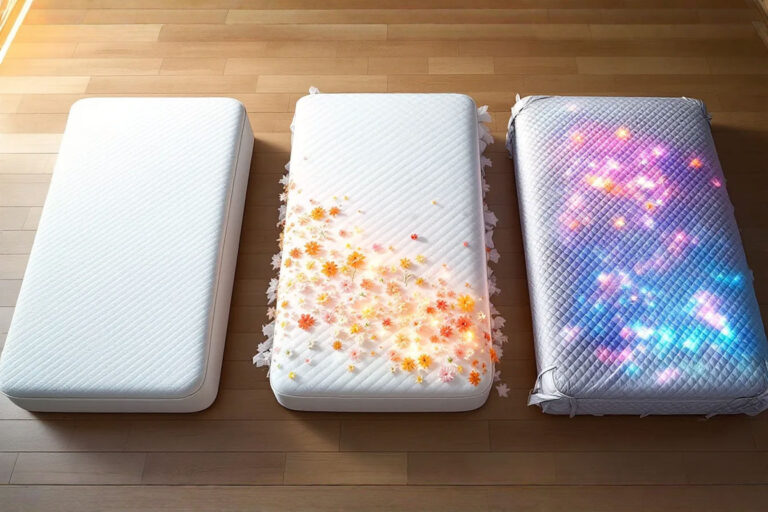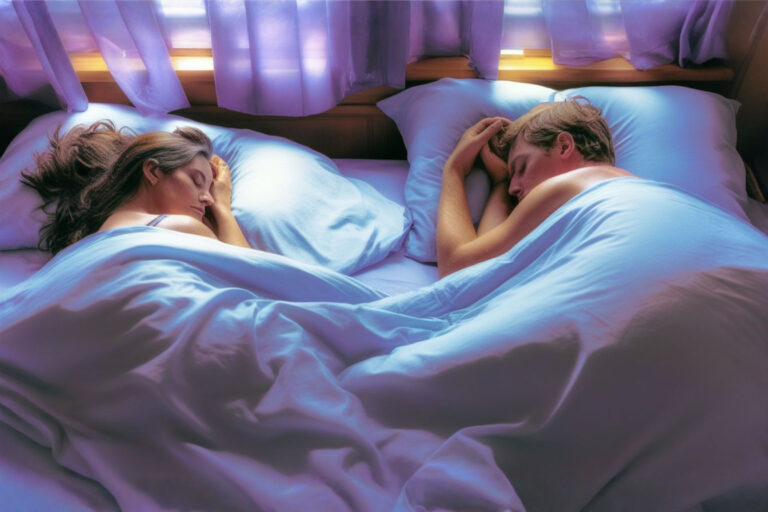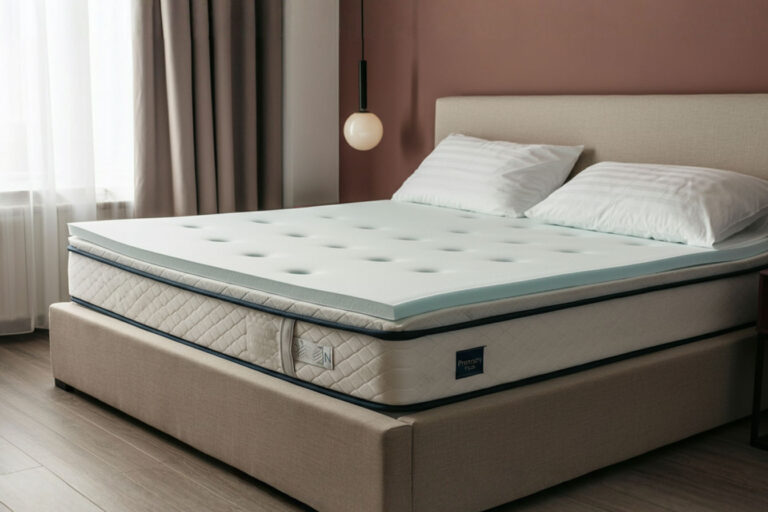King Size Mattress Topper: The Solution When You and Your Partner Need Different Firmness Levels
When your sleep preferences clash with your partner’s, dual-firmness king mattress toppers offer personalized comfort on each side of the bed—but which option is right for your specific needs?
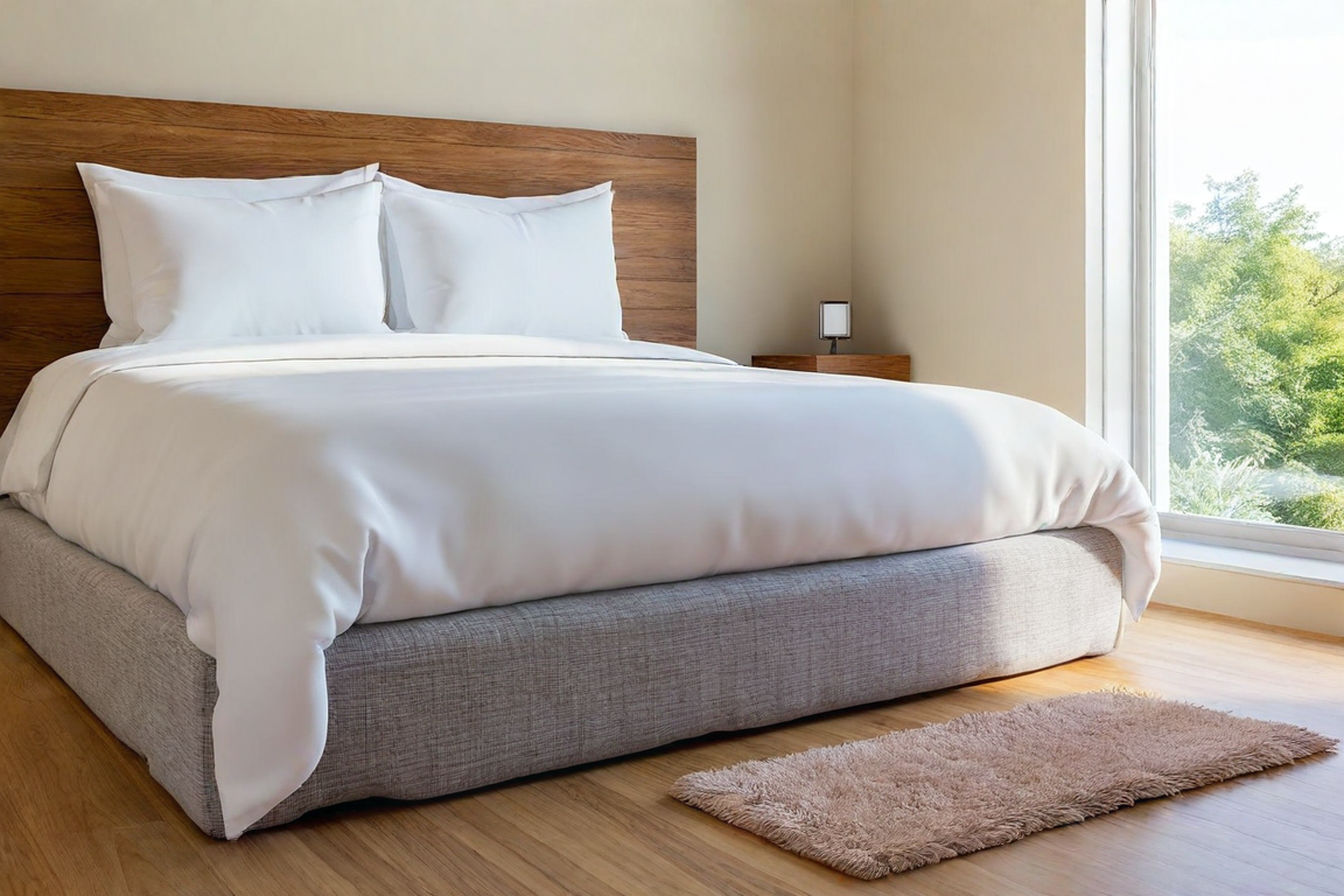
Sharing a bed with your partner should be a source of comfort and connection, but it can quickly become a nightly struggle when your sleep preferences don’t align. Perhaps you prefer a cloud-like softness while your partner needs firm support for their back pain. This common sleep incompatibility leaves many couples tossing and turning, compromising on comfort, or even considering separate beds.
Fortunately, there’s a solution that doesn’t require replacing your entire mattress or sleeping apart: the dual-firmness king size mattress topper. This innovative sleep accessory allows each person to customize their side of the bed to their ideal comfort level, creating harmony in shared sleep spaces.
In this comprehensive guide, you’ll discover how split king mattress toppers work, the various materials and options available, and how to choose the perfect customized sleep surface that satisfies both partners’ needs. Whether you’re dealing with different body types, sleep positions, temperature preferences, or health considerations, the right mattress topper can transform your sleep experience without breaking the bank.
Understanding Sleep Compatibility Issues
Why Couples Have Different Mattress Firmness Preferences
Sleep compatibility issues between couples are remarkably common. A recent sleep study found that nearly 63% of couples report disagreements about mattress comfort, with firmness being the most contested feature. These differences aren’t merely preferences—they’re often rooted in physical needs and sleep habits that have developed over decades.
Your ideal firmness level isn’t arbitrary but is influenced by several critical factors. Understanding these factors is the first step toward finding a solution that works for both partners without compromise.
How Sleep Position Affects Firmness Needs
The position you sleep in significantly impacts the ideal firmness level for your body:
Side sleepers typically need softer surfaces that allow shoulders and hips to sink in slightly, maintaining proper spinal alignment. The pressure points created when sleeping on your side require cushioning to prevent discomfort and numbness.
Back sleepers generally benefit from medium firmness that supports the natural curve of the spine while preventing excessive sinking in the hip area. This balanced support helps maintain the spine’s natural S-curve.
Stomach sleepers usually require firmer surfaces to prevent the torso from sinking too deeply, which would force the spine into an unnatural U-shape and potentially cause lower back pain over time.
When partners have different preferred sleep positions, a single firmness level can’t possibly serve both people’s needs optimally.
Weight, Body Type, and Health Considerations
Body weight distributes pressure differently across a sleep surface. Heavier individuals typically need firmer support to prevent excessive sinking, while lighter people may find firm mattresses uncomfortable as they don’t sink in enough to allow proper contouring.
Pre-existing health conditions also play a crucial role in determining ideal firmness. Those with back pain, arthritis, fibromyalgia, or pressure point sensitivity may have specific requirements that directly conflict with their partner’s needs.
Women who are pregnant often need adjustable firmness options as their bodies and comfort requirements change throughout pregnancy and beyond.
The Impact of Incompatible Sleep Surfaces on Relationships
Sleep incompatibility extends beyond physical discomfort—it affects relationship health. Research published in the Journal of Sleep Research indicates that couples who report sleep surface dissatisfaction also report higher relationship tension and decreased satisfaction with their partnership.
Poor sleep caused by an incompatible mattress leads to irritability, decreased patience, and reduced emotional resilience—all factors that can strain even the strongest relationships. Finding a solution that addresses both partners’ needs isn’t just about physical comfort; it’s an investment in relationship harmony.
What Is a Dual-Firmness Mattress Topper?
Definition and Explanation
A dual-firmness mattress topper is an adaptable sleep surface placed on top of your existing mattress that offers different levels of firmness on each side. Unlike standard mattress toppers that provide uniform comfort across the entire surface, these specialized toppers acknowledge that one size does not fit all—especially when sharing a bed.
The dual-firmness approach allows for personalized comfort zones that cater to individual needs without requiring separate beds or complete mattress replacement. This innovative solution bridges the gap between sleep compatibility and relationship proximity.
How They Differ from Standard Mattress Toppers
Standard mattress toppers modify your entire mattress surface uniformly, forcing couples to compromise on a single firmness level. This traditional approach often results in one partner sleeping uncomfortably or both settling for a middle-ground solution that fully satisfies neither person.
Dual-firmness toppers, by contrast, function as two distinct comfort zones within a single bed. The customization occurs at the topper level rather than requiring a specialized mattress, making this an accessible and cost-effective solution for couples with different preferences.
Split Design Options
There are two primary approaches to creating a dual-firmness sleep surface:
Two separate toppers placed side by side on a king mattress allows for complete customization. Each partner selects their ideal topper based on material, thickness, and firmness. This approach offers maximum flexibility but may create a noticeable seam between the two sides.
Single split toppers are manufactured as one unit with different firmness levels on each side. These purpose-built solutions typically feature a seamless design that prevents the separation issues that can occur with two individual toppers. The transition between firmness zones is often more subtle, creating a more unified sleeping surface.
Benefits for Couples with Different Needs
The advantages of dual-firmness toppers extend beyond simple comfort. These specialized sleep surfaces provide:
Improved sleep quality for both partners, as each person sleeps on their ideal surface rather than a compromise. Better sleep leads to improved daytime functioning, mood, and overall health.
Reduced motion transfer between partners, as the customized surfaces can absorb movement more effectively than a compromised middle-ground solution.
A cost-effective alternative to replacing an entire mattress or purchasing an adjustable bed. Mattress toppers typically cost a fraction of a new mattress while providing significant comfort improvements.
The ability to adjust and change preferences over time, as toppers can be replaced individually if needs evolve due to aging, health changes, or preference shifts.
Types of Customizable Mattress Toppers
Split Memory Foam Toppers
Memory foam is one of the most popular materials for customizable sleep surfaces due to its excellent pressure relief and contouring properties. These viscoelastic toppers respond to body heat and weight, creating a personalized impression that cradles pressure points.
For couples seeking different firmness levels, split memory foam toppers offer several advantages:
Available in various density ratings (measured in pounds per cubic foot), allowing partners to select different firmness levels. Higher density typically corresponds to firmer feel and greater durability.
Excellent motion isolation properties prevent movement on one side from disturbing the other partner—an important feature for couples with different sleep schedules.
Open-cell and gel-infused variations address the traditional heat retention concerns of memory foam, providing cooling benefits for those who sleep hot.
The main considerations with memory foam include potential off-gassing (which typically dissipates within a few days) and a slower response time when changing positions compared to other materials.
Dual-Firmness Latex Options
Natural latex toppers provide an excellent alternative for couples seeking customizable firmness with additional benefits:
Dunlop and Talalay latex processes create different feels, with Dunlop typically producing a firmer, denser topper and Talalay offering a softer, more buoyant feel with more precise firmness control.
Superior responsiveness compared to memory foam means latex bounces back quickly when you change positions, preventing the “stuck” feeling some experience with memory foam.
Natural temperature regulation keeps the sleep surface comfortable without requiring additional cooling technologies. This material naturally sleeps cooler than traditional memory foam.
Durability is exceptional, with quality latex toppers often lasting 10+ years—significantly longer than most other topper materials.
Hypoallergenic and antimicrobial properties make latex an excellent choice for those with allergies or respiratory concerns, though those with specific latex allergies should seek synthetic alternatives.
The primary drawback is cost, as quality latex toppers represent a higher initial investment than many alternatives, though their longevity often provides better value over time.
Adjustable Air Chamber Toppers
For the ultimate in customization, air chamber mattress toppers allow partners to adjust firmness levels according to nightly preferences:
Individual air chambers for each side can be inflated or deflated to achieve precise firmness levels, allowing adjustments as needed for changing comfort preferences.
Some advanced models include programmable settings that can be saved for consistent comfort night after night.
The ability to make minor adjustments is particularly valuable for those with fluctuating health conditions that may require different support levels on different days.
The technology typically requires power sources and may include pumps that make some noise during adjustments, though operation is generally quiet once settings are established.
Wool and Natural Fiber Alternatives
Natural fiber toppers offer traditional comfort with unique benefits:
Wool toppers provide exceptional temperature regulation, keeping sleepers warm in winter and cool in summer through natural moisture-wicking properties.
The resilient fibers offer a medium-firm support that compresses under pressure points while maintaining overall support.
For dual-firmness applications, different densities and thicknesses of wool batting can create varied feels for each partner.
Naturally hypoallergenic and resistant to dust mites, wool offers benefits for allergy sufferers without the chemicals sometimes found in synthetic materials.
The primary limitations include less dramatic firmness differentials between options and potentially higher maintenance requirements than synthetic alternatives.
Hybrid Mattress Toppers
Hybrid toppers combine multiple materials to leverage the strengths of each while minimizing limitations:
Common combinations include memory foam with latex layers, creating the pressure relief of memory foam with the responsiveness and cooling properties of latex.
Some models feature different materials on each side specifically designed for partners with different preferences.
The layered approach allows for more sophisticated comfort engineering, often resulting in better overall sleep experiences than single-material solutions.
These multi-material constructions typically command premium prices but offer sophisticated comfort solutions that can’t be achieved with single-material designs.
Key Factors to Consider When Choosing
Material Quality and Durability
When investing in a dual-firmness mattress topper, material quality significantly impacts both immediate comfort and long-term satisfaction:
High-density memory foam (5+ lbs per cubic foot) and 100% natural latex offer the best durability, often lasting 5-10 years compared to 1-3 years for lower-quality alternatives.
Certifications like CertiPUR-US for foam products or GOLS (Global Organic Latex Standard) for latex help verify quality and safety standards, ensuring your topper is free from harmful chemicals.
The cover material deserves attention too—organic cotton, bamboo, and Tencel covers offer better breathability and durability than synthetic blends, enhancing the performance of the underlying materials.
Examining warranty terms provides insight into manufacturer confidence in their product’s durability. Look for at least 3-5 years of coverage for quality toppers.
Thickness Considerations
Topper thickness plays a crucial role in comfort customization and performance:
For significant firmness adjustment, thicker toppers (3-4 inches) provide more dramatic changes to your existing mattress feel. These substantial toppers effectively create a new comfort layer that can transform a too-firm mattress.
Moderate adjustments can be achieved with 2-inch toppers, which add noticeable comfort while preserving more of the underlying mattress characteristics.
When partners have vastly different preferences, combining different thicknesses can further enhance customization—perhaps a 4-inch soft topper for one side paired with a 2-inch firm topper for the other.
Remember that thicker toppers require deep-pocket sheets to accommodate the additional height. Standard sheets may not fit properly once you’ve added a substantial topper to your mattress.
Temperature Regulation Properties
Sleep temperature preferences often differ between partners, making thermal regulation an important consideration:
Naturally cooling materials like gel-infused memory foam, open-cell foam structures, and ventilated latex help dissipate body heat for hot sleepers.
Phase-change materials incorporated into topper covers actively regulate temperature by absorbing excess heat when you’re too warm and releasing it when you cool down.
For those who sleep cold, wool toppers or traditional memory foam offer better heat retention without becoming uncomfortably warm.
Consider how the thermal properties of your chosen topper interact with your existing mattress—a cooling topper placed atop a heat-retaining mattress may not perform as effectively as expected.
Motion Isolation Features
For couples with different sleep schedules or restless sleepers, motion isolation can be as important as firmness customization:
Dense memory foam excels at absorbing movement, preventing disruption when one partner changes position or gets in and out of bed.
Latex, while responsive, offers moderate motion isolation with the advantage of not creating the “valley effect” that sometimes occurs with memory foam.
Split topper designs inherently reduce motion transfer compared to single-piece alternatives, as the physical separation prevents movement from transferring across the divide.
Test this feature by having one partner move while the other pays attention to how much movement transfers across the bed—an important real-world test that specifications alone can’t capture.
Price Points and Value Comparison
Dual-firmness solutions range from budget-friendly to premium investments:
Entry-level options typically cost between $200-400 for a king size split topper solution, usually featuring lower-density foams or synthetic materials with shorter lifespans.
Mid-range toppers ($400-700) offer better durability and performance, often incorporating cooling technologies and higher-quality materials that provide better value despite the higher initial cost.
Premium options ($700-1,200+) feature the highest-quality materials like natural latex, advanced cooling technologies, and sophisticated designs that can rival the comfort adjustment of a new mattress at a fraction of the cost.
Calculate value by dividing the price by expected years of use—a $900 topper lasting 9 years ($100/year) offers better value than a $300 option that needs replacement after 2 years ($150/year).
How to Set Up a Split King Mattress Topper
Preparing Your Existing Mattress
Before installing your new dual-firmness topper system, properly prepare your existing mattress:
Thoroughly clean your current mattress surface by vacuuming to remove dust, dander, and debris that could transfer to your new topper and reduce its lifespan.
Address any mattress protector needs first—if you’ll be using a mattress protector, decide whether it should go between the mattress and topper or over both layers.
Ensure the mattress surface is flat and even, addressing any significant depressions or uneven areas that could affect topper performance. Sometimes a mattress flip or rotation can help create a more level foundation.
Remove all bedding completely before installation to allow for proper positioning without bunching or misalignment.
Installation Tips for Different Topper Types
The installation process varies slightly depending on which type of dual-firmness solution you’ve selected:
For two separate toppers, position them side by side at the center line of the mattress, ensuring they meet precisely without overlapping or leaving gaps. Slight variations in thickness between different firmness levels may require adjustment to create a level sleep surface.
Single split toppers should be centered on the mattress with the division aligned with the center of the bed. Pay careful attention to orientation, as using the wrong side defeats the purpose of the dual-firmness design.
Vacuum-sealed toppers need time to expand fully—allow 24-48 hours for complete expansion before sleeping on the surface, particularly for memory foam options which may take longer to reach their final form.
Some toppers benefit from initial airing out to dissipate manufacturing odors. Setting up the topper in a well-ventilated room for 24-48 hours before making the bed can improve initial comfort.
Securing Techniques to Prevent Shifting
One of the primary concerns with split toppers is keeping them properly positioned throughout the night:
Non-slip mats placed between the mattress and toppers create friction that prevents sliding and shifting during movement. These thin rubber mats are inexpensive but extremely effective.
Topper straps or bands that wrap around both the topper and mattress secure the layers together, preventing independent movement. Look for adjustable options that can accommodate your specific mattress depth.
Sheet suspenders or holders can further secure your fitted sheet over the topper system, creating tension that holds all layers in place.
Some toppers come with corner straps or full fitted skirts that secure directly to the mattress, offering the most reliable attachment method if available for your chosen product.
Sheet and Bedding Considerations
Your new dual-firmness sleep surface requires appropriate bedding to function properly:
Deep-pocket sheets are essential for accommodating the increased height of your mattress plus topper system. Measure the total height and add 2 inches to determine the minimum pocket depth needed.
A single fitted sheet works best to unify the split topper system, creating consistent tension across both sides that helps hold everything in place.
Mattress encasements that cover both the mattress and topper can eliminate shifting entirely while providing protection, though they typically cost more than standard sheets.
Consider temperature regulation in your bedding choices as well—breathable cotton or bamboo sheets complement cooling toppers, while flannel or jersey may counteract their benefits by trapping heat.
Maintaining Your Dual-Firmness Sleep Surface
Cleaning Recommendations for Different Materials
Proper cleaning extends the life of your investment while ensuring a hygienic sleep environment:
Memory foam and latex toppers should never be fully submerged or machine washed. Instead, spot clean stains with mild detergent and water, using as little moisture as possible and allowing thorough drying before remaking the bed.
Removable covers should be washed according to manufacturer instructions, typically in cold water on a gentle cycle and air-dried to prevent shrinkage that could affect fit.
Regular vacuuming with an upholstery attachment removes dust, skin cells, and allergens that can accumulate over time. Monthly cleaning is recommended for most households.
For deeper cleaning, consider professional services that specialize in mattress and topper sanitation using low-moisture extraction methods that won’t damage foam or latex materials.
Rotating and Flipping Guidelines
Strategic rotation extends the life of your topper system by preventing uneven wear:
Individual toppers should be rotated 180 degrees (head to foot) every 3-6 months to distribute wear patterns, particularly important for the side that supports the heavier partner.
Some toppers can be flipped while others have designated top and bottom sides—check manufacturer guidelines before attempting to flip your topper.
Partners can occasionally swap sides to further equalize wear, though this temporarily sacrifices the customized firmness benefit unless you also swap the toppers.
Mark rotation dates on your calendar to establish a consistent maintenance routine—regular rotation can significantly extend topper lifespan.
Extending the Lifespan of Your Investment
Proactive care maximizes the return on your dual-firmness topper investment:
Always use a waterproof, breathable mattress protector that encases both the mattress and toppers to prevent spills, sweat, and oils from degrading the materials.
Minimize direct sunlight exposure, which can break down foam and latex materials over time. If your bed receives direct sun, consider window treatments that block UV rays during peak hours.
Follow weight guidelines provided by manufacturers—overloading a topper designed for a specific weight range accelerates compression and shortens useful life.
Allow your body to adjust gradually to the new sleep surface. The break-in period for quality toppers typically ranges from 2-4 weeks as both the materials and your body adapt to the new support system.
Troubleshooting Common Issues
Even the best dual-firmness systems sometimes encounter problems that require adjustment:
For toppers that slide despite securing methods, additional traction can be created with silicone caulk dots applied to the underside (though this makes the topper more permanent).
If a gap develops between split toppers, bridge connectors specifically designed for split mattresses and toppers can join the sections while still allowing customized firmness.
Compression or indentations that develop over time may indicate it’s time to rotate or possibly replace one side of your topper system. Most quality toppers should maintain their support characteristics for at least 3-5 years.
Temperature issues can often be addressed by adding or changing mattress protectors—some create a vapor barrier that counteracts cooling features, while others enhance breathability.
Real-World Solutions: Case Studies
Couple with Back Pain and Side-Sleeping Preferences
Michael and Jennifer had struggled for years with their sleep surface. Michael, a back sleeper with chronic lower back pain, needed firm support to prevent morning stiffness. Jennifer, exclusively a side sleeper with sensitive shoulders, found Michael’s firm mattress preference caused painful pressure points and numbness.
Their solution: A split king arrangement with a 3-inch high-density (5 lb) firm memory foam topper for Michael and a 3-inch soft, open-cell memory foam topper for Jennifer. The different densities provided customized support while the consistent height created a level surface across the bed.
Results: Michael reported a 70% reduction in morning back pain within two weeks, while Jennifer no longer experienced shoulder numbness. Both noted improved sleep quality and fewer disturbances from partner movement.
Hot Sleeper Paired with Cold-Sensitive Partner
James typically woke sweating regardless of room temperature, while his wife Elena needed extra blankets and complained of cold feet even in summer. Their temperature incompatibility seemed impossible to resolve with a single sleep surface.
Their solution: A dual-firmness system combining a 3-inch gel-infused cooling latex topper for James with a standard memory foam topper for Elena that retained more body heat. They further customized by adding a dual-zone heated mattress pad beneath the toppers that could be controlled independently on each side.
Results: Temperature complaints decreased dramatically, with James reporting “the first summer without night sweats” and Elena enjoying warmth without overheating her partner. Their sleep compatibility improved to the point where they could use the same blanket adjusted for thickness on each side.
Weight Disparity Considerations
When Mark (230 lbs) and Sarah (115 lbs) shared a standard mattress, Sarah felt like she was “rolling toward the center” due to the significant depression created by Mark’s greater weight. Their mattress developed a visible slope toward Mark’s side within the first year.
Their solution: A firmer 4-inch latex topper for Mark’s side provided adequate support while resisting excessive compression. Sarah’s side featured a softer 2-inch memory foam topper that allowed her lighter frame to create enough impression for comfort. The different thicknesses were balanced by adding a 2-inch high-resilience foam layer beneath Sarah’s topper.
Results: The customized arrangement eliminated the “rolling downhill” effect while providing appropriate support for both partners. Mark no longer felt that his mattress was “bottoming out,” while Sarah reported feeling properly supported rather than “floating on top” of an overly firm surface.
Pregnancy and Changing Comfort Needs
Lisa’s pregnancy created a rapidly evolving comfort situation. As a stomach sleeper pre-pregnancy, she needed to adjust to side sleeping while her husband David maintained his usual sleep position and preferences.
Their solution: A modular approach using a medium-firm latex base topper for the entire bed, with an additional soft memory foam topper for Lisa’s side that could be removed or repositioned as her pregnancy progressed. They later added specialized pregnancy cushions that integrated with their topper system.
Results: The adaptable arrangement accommodated Lisa’s changing needs throughout pregnancy and postpartum recovery. The ability to modify one side of the bed without disrupting David’s sleep surface proved valuable during a time of significant physical changes.
Alternative Options to Consider
Full Mattress Replacement Pros and Cons
While toppers offer excellent customization, sometimes a complete mattress replacement deserves consideration:
Dual-chambered air mattresses like Sleep Number offer the ultimate in adjustability with digital controls for each side, though they typically cost $1,500-3,000 for quality models.
Split king mattress sets feature two twin XL mattresses that can have entirely different constructions, providing complete customization but requiring special bedding and typically costing $2,000+ for quality sets.
Mattresses with zippered covers allow internal components to be swapped, creating different firmness zones without visible splitting. These modular designs offer excellent customization but average $1,500-2,500.
If your existing mattress shows significant wear (sagging, broken springs, etc.), toppers may mask but not solve underlying issues, making replacement the better long-term investment despite higher initial costs.
Mattress Pads vs. Toppers Comparison
Understanding the difference between pads and toppers helps determine the right solution for your needs:
Mattress pads (typically 1/2 to 1 inch thick) primarily protect the mattress and add minimal cushioning. They’re insufficient for creating significant firmness differences but may complement a split topper system.
Mattress toppers (2-4 inches thick) substantially alter the feel of a mattress and can create true dual-firmness zones appropriate for couples with different preferences.
Some products combine the functions of protectors and toppers, offering waterproof barriers along with comfort layers, which can streamline the bedding system while providing both functions.
For minor adjustments or temporary solutions, thinner pads may suffice, but meaningful comfort customization requires the substantive construction of genuine toppers.
Adjustable Bed Frames as Companions
Adjustable bases complement split topper systems by adding positional customization:
Split king adjustable frames operate independently on each side, allowing partners to elevate head, feet, or both according to individual preferences.
Zero-gravity positions can reduce pressure points and improve circulation, potentially decreasing the firmness differential needed between partners.
For health conditions like acid reflux, sleep apnea, or edema, the combination of position adjustability and customized firmness creates a comprehensive sleep solution.
While premium adjustable bases represent a significant investment ($1,000-3,000), they address comfort dimensions that toppers alone cannot modify, making them valuable companions to dual-firmness systems.
Budget-Friendly Temporary Solutions
For those not ready to invest in premium dual-firmness systems, temporary solutions can provide immediate improvement:
Egg crate foam toppers (under $50) placed on one side of the bed create modest firmness differences at minimal cost, though they typically last only 6-12 months before needing replacement.
Body pillows strategically positioned can simulate the effect of different firmness zones by providing additional support where needed without altering the entire sleep surface.
Mattress firmness adjusters—thin inserts placed under specific mattress areas—can create targeted support differences for around $100, though their effects are more subtle than complete toppers.
For testing preferences before investing, some companies offer topper rental programs that allow couples to experiment with different materials and firmness levels for a monthly fee.
Conclusion
Finding the perfect sleep surface represents one of the most important investments couples can make in both their physical health and relationship quality. When partners have different needs, split king mattress toppers offer an elegant solution that eliminates the need for compromise without the expense of replacing an entire mattress.
The key to success lies in understanding your specific requirements—considering sleep positions, weight differences, health needs, and temperature preferences—then selecting materials and designs that address those unique factors. Whether you choose separate toppers, a purpose-built dual-firmness model, or combine a topper system with an adjustable base, the goal remains the same: creating personalized comfort zones that allow both partners to sleep soundly.
Remember that quality matters significantly in this purchase. Superior materials and construction not only provide better immediate comfort but also greater durability, making them more economical in the long run despite higher initial investments. A thoughtfully selected dual-firmness king topper system can transform your sleep experience for years to come, proving that when it comes to shared sleep spaces, you truly can have it all—without compromise.
FAQs About King Size Mattress Toppers for Couples
How do I keep split toppers from separating during the night?
Prevent separation by using non-slip mats between the mattress and toppers, securing straps that wrap around the entire mattress, and using a single fitted sheet with adequate tension to hold both sides together. Some couples also use a connecting bridge specifically designed for split mattress systems.
Can I use regular king sheets with a split topper system?
Standard king sheets can work if your toppers don’t add significant height to the mattress. However, most topper systems require deep-pocket sheets that accommodate the additional 2-4 inches of height. Measure your complete mattress plus topper height and add 2 inches to determine the minimum pocket depth needed.
How long do dual-firmness mattress toppers typically last?
Quality varies significantly between materials and manufacturers. High-density memory foam and natural latex toppers typically last 5-8 years with proper care, while lower-density foams may need replacement after 2-3 years. Proper rotation, protection from moisture, and appropriate weight distribution all extend longevity.
Are split toppers noticeable when lying in the middle of the bed?
The transition between different firmness zones can be noticeable, particularly with two separate toppers. Purpose-built dual-firmness toppers typically feature a more gradual transition zone. Some couples use a thin unified comfort layer over both sides to smooth the transition while maintaining most of the firmness differentiation.
Can I try a dual-firmness system before committing?
Many reputable manufacturers offer trial periods ranging from 30-100 nights for mattress toppers. These policies allow couples to test the system in their actual sleep environment without risk. Some specialty sleep stores also offer in-store testing of different topper materials and firmness levels.

